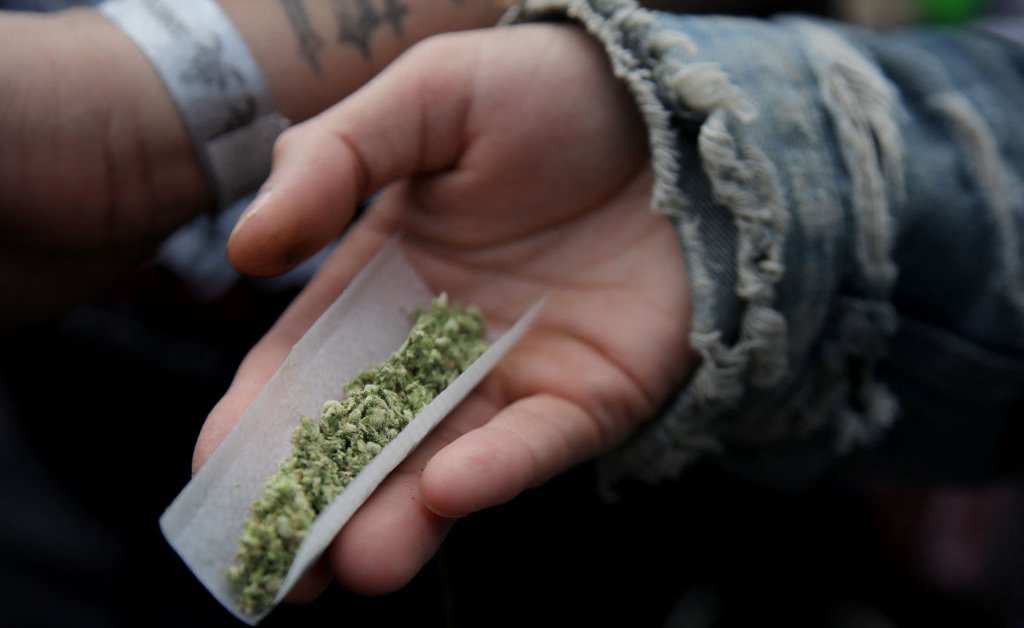After decades of waging a ruinous and counterproductive war on drugs, the U.S. government is finally taking steps in a new direction.
President Biden has issued mass pardons for marijuana possession offenses and urged the Drug Enforcement Administration to reschedule pot, so that it may be legally prescribed by physicians. The Food and Drug Administration has been teeing up clinical trials for MDMA and magic mushrooms. Lawmakers from both parties have endorsed “harm reduction” strategies to combat the opioid crisis. Compared to the zero-tolerance policies of the recent past, this emerging approach to drug control is less focused on criminal punishment and more attentive to the costs and benefits of different substances and interventions.
Although few recall it now, the same basic approach almost won out a half-century ago—in the courts. Litigants brought hundreds of constitutional challenges to punitive drug laws during the 1960s and 1970s. And they secured pathbreaking rulings from federal and state judges who deemed the laws arbitrary, authoritarian, and cruel.
Almost all of those rulings were narrowed or overturned by the 1980s, paving the way for the escalation of drug penalties and militarization of drug enforcement under President Reagan and his successors. But this overlooked chapter in our constitutional history is worth revisiting. It shows how constitutional law could have denied the worst excesses of the war on drugs, instead of becoming ever more defined by them, and offers clues about how to resist draconian drug policies today.
* * *
The 1960–70s turn toward the Constitution to fight punitive drug laws was in many ways a return. Throughout the late 1800s and early 1900s, opponents of such laws challenged them in court on grounds of government overreach. Even though they increasingly approved restrictions on the manufacture and sale of intoxicants, the authorities “were unanimous in maintaining that constitutional provisions protected possession,” as one scholar observed in 1919. “(T)he inalienable rights possessed by the citizens … of seeking and pursuing their safety and happiness … would be but an empty sound,” the Kentucky Court of Appeals explained ten years earlier, “if the Legislature could prohibit the citizen the right of owning or drinking liquor.”
This legal framework fell apart in the 1910s, never to return, after a wave of prohibitory laws swept the nation and courts embraced a broader view of the government’s regulatory powers. By the mid-twentieth century, state and federal lawmakers had constitutional carte blanche to penalize drug possession and consumption as well as production and distribution. They did so with mounting severity into the 1960s.
Over the course of that decade, however, a variety of developments put the question of drug rights back into play. Surging use of illicit drugs by Vietnam veterans, students, and college-educated professionals created new constituencies for reform. Government bodies issued report after report urging relaxation of the drug laws, especially the marijuana laws, as did establishment groups ranging from the American Bar Association and the American Medical Association to the Consumers Union and the National Council of Churches.
The National Commission on Marihuana and Drug Abuse, for instance, concluded in 1972 that intermittent use of marijuana “carries minimal risk to the public health” and recommended decriminalization. The Nixon administration’s health department sponsored a study—blocked from publication but leaked to journalists—that found young people’s use of psychedelics can be “highly moral, productive, and personally fulfilling.” The Ford administration put out a white paper urging that drug policy be refocused on substances such as heroin that have “the highest costs to both society and the user.”
Reform-minded lawyers saw an opportunity. Building on the Warren Court’s civil liberties decisions, they began to argue that specific drug bans may violate the Constitution even if the government has expansive authority to regulate drugs in general. And many judges responded with newfound sympathy. The defendant in a low-level drug case, two Michigan justices warned in an opinion that drew national headlines, “could have been any mother’s son or daughter.”
Some judges in the 1970s held that classifying marijuana as a narcotic, or together with narcotics, is so illogical as to violate the Constitution’s Equal Protection Clause. That clause, the Supreme Court had instructed, requires criminal classifications to be at least minimally reasonable. Drawing on the latest medical research, these judges determined that lumping marijuana with the most dangerous substances fails even this minimal requirement while, in the words of the Connecticut Superior Court, “undermin(ing) a fundamental respect for the law” and imposing “staggering” social costs. Had this line of rulings prevailed, marijuana would have been removed from the most restrictive drug schedules—fifty years before President Biden’s plea to the D.E.A. to do just that.
Some judges in the 1970s argued that criminal bans on “soft drugs” violate the right to privacy implicit in the Due Process Clause. In light of the Court’s recent privacy decisions involving contraception and abortion, retired Justice Tom Clark opined in 1972 that his former colleagues “might find it difficult to uphold a prosecution for possession” of marijuana. The Alaska Supreme Court refused to uphold such a prosecution three years later, in a ruling that is still seen by international lawyers as “










